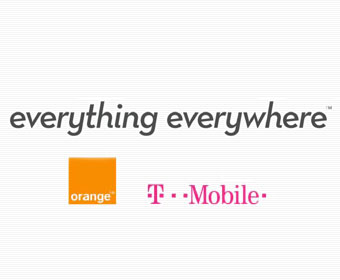The UK arms of Orange and T-Mobile began promoting the consumer benefits of their mammoth merger on Monday. But the service improvement promises made by the newly created company—Everything Everywhere—seemed to carry an acknowledgement that the coverage profiles of the two networks individually were previously somewhat lacking.
September 6, 2010

The UK arms of Orange and T-Mobile began promoting the consumer benefits of their mammoth merger on Monday. But the service improvement promises made by the newly created company—Everything Everywhere—seemed to carry an acknowledgement that the coverage profiles of the two networks individually were previously somewhat lacking.
The establishment of the 50:50 joint venture, which will maintain both the Orange and T-Mobile brands, created a new market leader, with over 34 million subscribers and a 43 per cent share of the UK market.
And this week the firm said that the opportunity to access both networks would enable those subscribers to make calls and send test messages in more places in the UK “than ever before”.
In order for users to be able to roam freely across both networks they must register to gain access to the other network. According to CEO Tom Alexander, should a registered customer lose signal on their own network, they will automatically pick up the signal from the other network, where it’s available. The functionality will be available from October.
How well this will work remains to be seen, as the merged operation will have the same number of subscribers and the same network coverage footprint, but less resources. Part of the rationale for the merger of the two networks was to cut out site duplication and create a single ‘super-network’ with a smaller physical footprint.
“Until now, the industry has been working in a single network environment. We have a vision of a ‘multinet’ world where the consumer will be able to access what they want, when they want, at the touch of a button. It will all be possible due to a complex system of interweaving multiple networks, bringing mobile, wifi and fixed technologies together to act as a super network,” Alexander said.
Next year, users can also expect features such as automatically switching to whichever of the two networks has the strongest signal while they’re mid-call, and enhanced data and internet coverage.
Given the kind of improvements that Everything Everywhere is promising, it follows that the two networks must each have had significant coverage gaps prior to the merger; something neither carrier would have admitted to prior to the deal.
About the Author(s)
You May Also Like








.png?width=300&auto=webp&quality=80&disable=upscale)


_1.jpg?width=300&auto=webp&quality=80&disable=upscale)


.png?width=800&auto=webp&quality=80&disable=upscale)